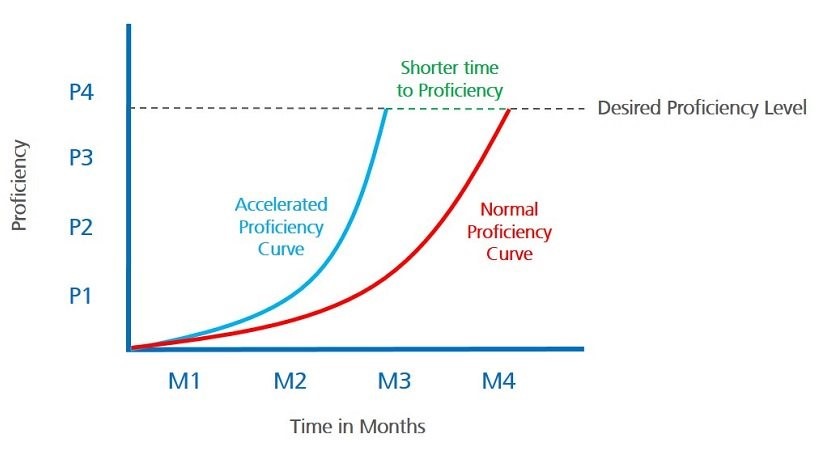For any organization, the successful integration of new employees is crucial to maintaining productivity and achieving business objectives. However, the process of onboarding and training can often be time-consuming, leading to a delay in new hires reaching their full potential. Human Resources (HR) professionals play a pivotal role in accelerating the time to productivity of new employees through strategic planning and implementation of effective onboarding methods. In this article, we’ll explore various strategies and real-life industry examples to demonstrate how HR professionals can reduce the learning curves of new employees and facilitate their seamless transition into the workforce.
Comprehensive Onboarding Programs: Implementing a well-structured onboarding program is essential for providing new employees with the necessary tools, resources, and knowledge to excel in their roles from the outset. HR professionals can design onboarding processes that include orientation sessions, job shadowing opportunities, mentorship programs, and access to online training modules. By offering a comprehensive onboarding experience, organizations can equip new hires with the information and support they need to quickly adapt to their new environment.
Example: Google’s onboarding program, known as “Noogler Orientation,” is a prime example of an effective onboarding strategy. The program includes a series of workshops, mentorship opportunities, and team-building activities designed to acclimate new hires to Google’s culture and expectations. As a result, new employees can quickly integrate into their teams and contribute to projects with confidence.
Personalized Learning Paths: Recognizing that each employee has unique learning styles and preferences, HR professionals can create personalized learning paths tailored to individual needs. By assessing the skills, strengths, and development areas of new hires, HR can offer customized training programs that address specific learning objectives and accelerate the learning process.
Example: IBM utilizes a personalized learning platform called “Your Learning” to provide new employees with customized training modules based on their roles and skill levels. This approach allows employees to access relevant resources and learning materials at their own pace, leading to faster skill acquisition and increased productivity.
Continuous Feedback and Support: Regular feedback and support mechanisms are essential for guiding new employees through their initial stages of employment and helping them overcome challenges. HR professionals can establish open lines of communication between managers and new hires, facilitating ongoing feedback sessions to address concerns, provide guidance, and offer encouragement.
Example: HubSpot, a leading marketing and sales software company, assigns each new employee a “buddy” or mentor to provide support and guidance throughout the onboarding process. This buddy system ensures that new hires have someone to turn to for assistance and feedback, enabling them to navigate their roles more effectively and reduce their learning curves.
Gamification and Interactive Learning: Integrating elements of gamification and interactive learning into training programs can make the onboarding process more engaging and enjoyable for new employees. HR professionals can leverage gamified simulations, quizzes, and challenges to reinforce key concepts, enhance retention, and encourage active participation.
Example: Deloitte’s “Leadership Academy” incorporates gamification elements into its leadership development programs to engage participants and drive learning outcomes. By using interactive simulations and virtual scenarios, Deloitte empowers new leaders to develop critical skills in a dynamic and immersive learning environment.
Conclusion:
Accelerating the time to productivity of new employees is a collaborative effort that requires proactive planning, strategic implementation, and ongoing support from HR professionals. By adopting innovative onboarding strategies, personalized learning approaches, and continuous feedback mechanisms, organizations can streamline the integration process and empower new hires to contribute effectively to their teams. By prioritizing the reduction of learning curves, HR professionals can drive employee satisfaction, retention, and ultimately, organizational success.











